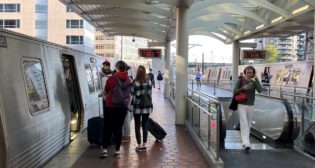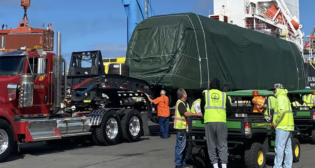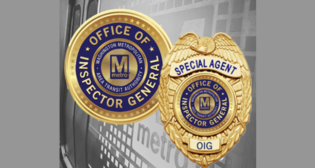
NTSB Issues Preliminary Report on NYCT Train-to-Train Collision
Written by Marybeth Luczak, Executive Editor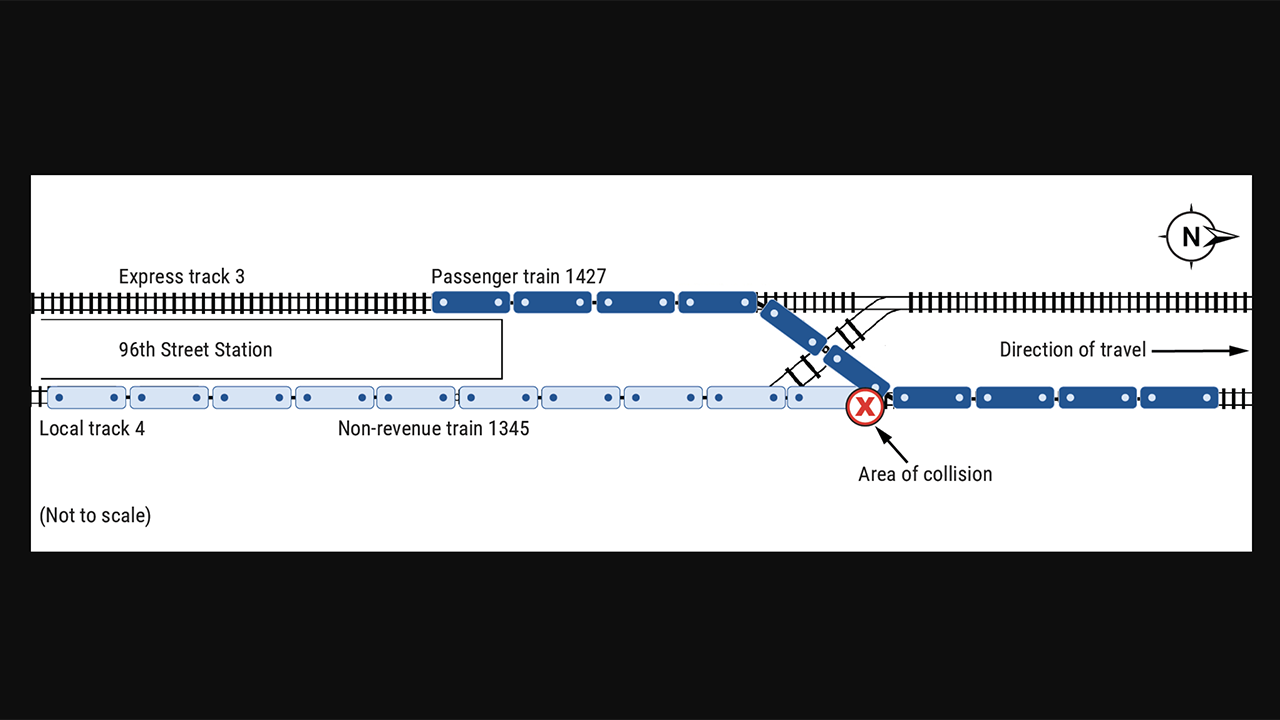
Illustration of the collision location on MTA NYCT. (Federal Transit Administration Image, Courtesy of the National Transportation Safety Board.)
Three weeks after two MTA New York City Transit (NYCT) trains collided north of Manhattan’s 96th Street Station, the National Transportation Safety Board (NTSB) has released a preliminary report for its ongoing investigation.
At about 3:00 p.m. on Jan. 4, a northbound non-revenue train collided with a northbound passenger train on the No. 1 Line (see diagram above). The passenger train (1427) was crossing over from express track 3 to local track 4 when the non-revenue train (1345) overran a red signal at the north end of the station platform, entered the crossover, and struck the passenger train’s fifth car, according to the NTSB’s Jan. 25 report, which provides a detailed sequence of events. Five cars derailed in the 96th Street subway tunnel: two on the 10-car non-revenue train (1345), which carried a transit system supervisor, an operator (who was acting as a flagger), a conductor, and a railcar inspector, and three on the 10-car passenger train (1427), which carried a conductor, an operator, and approximately 200 passengers. Twenty-two passengers and three crew members suffered minor injuries.
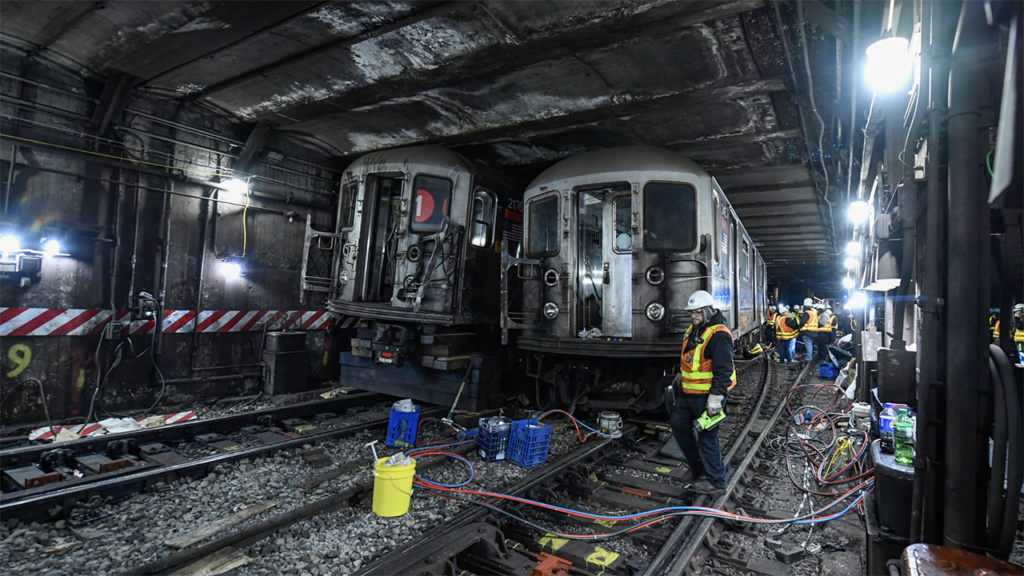
The transit agency had not estimated the cost of damages when the NTSB released its report.
What Led Up to the Collision?
At about 2:11 p.m., train 1345 was running in revenue service when an “unruly passenger“ triggered an emergency braking application by pulling the emergency brake valve cords within the first five railcars, according to the NTSB, which noted that the cords are accessible to passengers within each car. Unable to reset the emergency braking application, the train operator moved the train to 79th Street Station and offloaded all passengers. A NYCT railcar inspector arrived on scene but was also unable to reset the brakes, NTSB reported; the train was placed into “bad order“ or out-of-service status.
“The operations control center instructed the railcar inspector to cut out the brakes and traction motors on the five railcars in the front portion of the train so it could be operated,” according to the NTSB. “The inspector was then instructed to move the out-of-service train to a rail yard for repairs. After the railcar inspector performed the cut out, train 1345 departed 79th Street Station at restricted speed, northbound on track 4 toward 96th Street Station, destined for a nearby yard.” NTSB noted that under NYCT operating rules, “restricted speed requires a crew to operate a train below 10 mph and at a speed that allows them to stop with one-half the range of vision.” According to the federal agency, the transit system supervisor was operating the controls of the sixth railcar. The flagger was positioned in the lead railcar and communicating with the transit system supervisor to coordinate the train’s movements.
In interviews with NTSB investigators, “the flagger said he lost radio communications with the transit system supervisor near 96th Street Station,” according to the federal agency. “The transit system supervisor did not receive the flagger’s instruction to stop, the train passed by a signal requiring a stop at the end of the 96th Street Station platform, and the collision occurred. The track in the area was equipped with trip-stops, which activate a train’s emergency brakes if the train passes through a signal requiring a stop. Because the brakes on the first five railcars had been cut out, emergency brakes could not be activated by the trip-stop.”
NTSB reported that its investigators, while on the scene, requested security camera images and radio audio recordings; reviewed signal logs; reviewed NYCT operating procedures; conducted sight distance observations; inspected both trains and tested the brakes on the last five railcars of train 1345; tested the portable radios used by the crew of train 1345; and completed interviews. Neither train involved in the collision was equipped with event recorders, cameras or other recording devices.
The federal agency noted that all information in its preliminary report is “subject to change.”
Next Steps
Future activity “will focus on NYCT’s operating procedures when moving bad order cars, radio communication procedures, mechanical procedures when placing a revenue train in bad order status, and the lack of federal requirements for railcar event recorders on FTA [Federal Transit Administration]-regulated properties,” the NTSB report said.
In general, investigations take 12-24 months to complete, according to the NTSB website. The “timing between the beginning of an investigation and a probable cause determination and [final] report varies based on the complexity of the investigation and the workload of the agency’s investigators,” it noted.
The FTA, New York State Public Transportation Safety Board, MTA (Metropolitan Transportation Authority), NYCT and Transport Workers Union Local 100 are all parties to the ongoing investigation.
